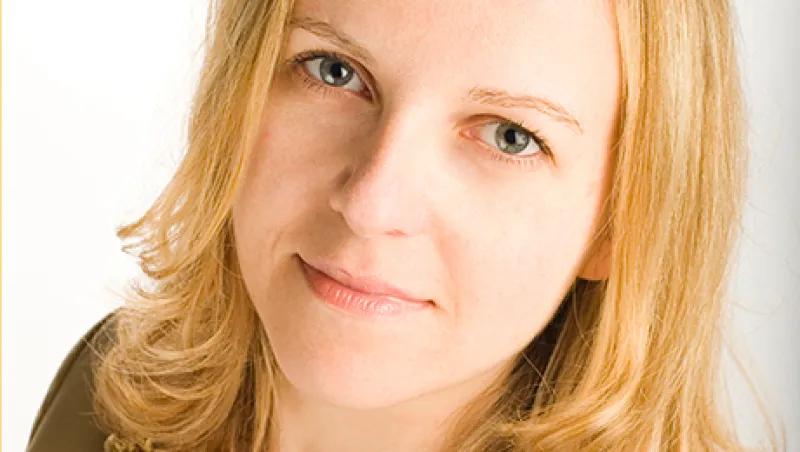Advances in high-speed technology are finally having a major impact on trading of foreign exchange globally, a decade after automation revolutionized equities trading.
Forex algorithm usage grew to 11 percent of clients worldwide in 2013, from 7 percent the year before, according to a recent report by Greenwich Associates, a market research firm. Greenwich expects algorithmic forex trading to burgeon to 18 percent of institutional investors by the end of the year. The firm says the biggest users of such algos are hedge funds, which employed them for 53 percent of their trading volume last year, compared with just 3 percent for corporates.
The other interesting statistic from Stamford, Connecticut–based Greenwich is that the five largest forex dealers — all of them banks — are increasing their market share. According to an October survey, Barclays, Citigroup, Deutsche Bank, JPMorgan Chase & Co. and UBS captured 53 percent of global forex trading volume in 2013, up from 48 percent the year before.
These two data points are connected: The Big Five banks have the turnover and the resulting resources to invest massive sums in the latest technology, which gives them an edge over smaller competitors.
“It’s a bit of a self-fulfilling situation,” says Kevin McPartland, head of research for market structure and technology at Greenwich Associates. “These banks continue to be leaders because they invest and improve their products continually. Investors are fickle, and if they feel like they are not getting the service they expect, they’re going to quickly move to someone else who will provide them that service.”
James Dalton, London-based director of forex algorithmic execution at Citi, says his firm benefited by beginning the upgrade to algorithmic trading in 2007, when it was still a boutique product and the bank could learn incrementally. The early start has created a wide moat restricting competition from new rivals, Dalton says: “Now if you introduce a new product to market, it has to be intensely researched and tested, and that is expensive and time-consuming to do.” As a result, Dalton adds, Citi’s algorithmic trading volume has doubled in the past year.
One competitor that says it is thriving is Able Alpha Trading, which creates algorithms for clients ranging from institutional investors to smaller banks that find it cheaper to buy algos off the shelf than spend the money to develop their own. “Banks are risk-averse and don’t want to invest in cutting-edge technology until it is proven,” says Irene Aldridge, managing partner at New York–based Able Alpha.
Aldridge, author of the 2013 book High-Frequency Trading: A Practical Guide to Algorithmic Strategies and Trading Systems, says that whereas equity trading consists of just buyers and sellers, forex trading typically has three users: buyers, sellers and what she calls consumption traders, whose business needs force them to trade forex so they can meet payrolls and other regular commitments. For the latter group, minor differences in prices are unimportant, and they have remained over-the-counter customers at banks’ forex desks.
For everyone else, “trading decisions repeat over and over again, so they are perfect for a machine to make,” Aldridge says. “It becomes more efficient to do it in an automated way than people sitting at a desk.”
Although algos started as a pure execution mechanism — for example, to break down a large trade into many small ones over time to avoid affecting the market — they now cover many different aspects of forex trading. Macro hedge funds use specially designed algorithms that weigh a wealth of economic data and then make buy and sell decisions in specific currency pairs, Aldridge explains.
Greenwich’s McPartland says one of the drivers of the move toward algorithmic trading is that banks have been faced with increased capital costs because of the new Basel III international banking rules, so they’re looking to reduce expenses related to trading activity. “The sell side has had to cut back on resources quite a bit,” he notes. “It’s more of a scalable business if you don’t have to put a trader or salesperson to cover every single client.”
The clients also benefit considerably from the move to algorithmic trading, Citi’s Dalton says. According to his calculation, in currency pairs involving the Group of Seven countries, most foreign-exchange platforms provide clients with bids that range up to 6 pips from the midpoint between bid and ask. (A pip is a hundredth of 1 percent.) Citi’s algorithms, on the other hand, can provide a price just 1.5 pips from the midpoint, a significant saving on transactions in the tens of millions of dollars.
Another reason clients are migrating to larger banks is that they’re concerned about a mistake, such as a so-called fat-finger trade, that could cause them financial losses. With the top five forex banks, they know they’ll be made whole if there’s a trading error.






